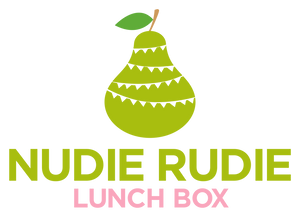· By Julia Boase
PRIME AND FOOD ADVERTISING TO KIDS
If you follow me on Instagram then you’ll know that I recently shared that the quest for Prime almost destroyed the first day of my holidays.
Don’t know what Prime is? Neither did I until a few weeks ago, but let me enlighten you. Prime (Energy and Hydration) drinks are the brain child of two YouTube stars Logan Paul and KSI.
Prime Energy is a heavily caffeinated energy drink that is not available in Australia (although can be purchased via online platforms like Ebay) as the caffeine content exceeds what Foods Standards Australia has set as an acceptable level for an energy drink (32mg/100ml) (Prime Energy contains 56mg/100ml). Prime hydration is the non caffeinated version that has caused an absolute frenzy amongst young people.
There always seems to be a new “trend’ or must have item with kids. I can think of a few in my time as a parent - fidget spinners and loom bands are top of mind, but I really struggle to recall a food ever creating this level of hysteria. At first glance Prime hydration looks relatively harmless. It’s a mixture of water, coconut water, some vitamins and minerals, some natural colouring (Beta carotene), sweeteners (sucralose and acesulfame) as well as some branched chain amino acids (BCAAS). It comes with a warning statement “Not suitable for children under 15yrs, pregnant or lactating women and should only be used under medical or dietetic supervision”.
It’s not particularly clear why the company has declared it unsafe for children under 15yrs but most likely it’s because we have limited data on BCAA supplementation in healthy children and pregnant/lactating women. BCAAs are essential amino acids that can’t be made by our bodies. To be clear we consume BCAAs naturally everyday in foods like meat, dairy and legumes and supplementation for children is most certainly unnecessary. Whilst I am not a sports dietitian, there is some data that BCAAs may aide sports performance in adults (they aide in muscle protein synthesis and prevent muscle protein breakdown), although it is unclear whether there is any additional benefit over just whole protein supplementation or dietary sources of protein alone. Best talk to an Accredited Practising Sports Dietitian if this is something you’re interested in.
Energy drinks like Prime (as well as Gatorade and Powerade) are also unnecessary hydration aides for kids playing sports. Water remains the best choice and you can read more about that here.
A bottle of Prime Hydration’s highly unlikely to do any harm to your child, but it's not good for them either. In most cases like this when kids are desperate to try a new (not overly healthy) food, my approach is to let them have it. It takes that food off its pedestal and makes it less interesting and therefore something they’re most likely to forget about or at least remove the “frenzy” from it. This is my approach for requests I get for things like MacDonald’s or a new chip favour - I offer it as an as an occasional choice and move on, making sure that 80% of our food choices are healthy and nutritious.
But here’s my problem with Prime and something I haven’t heard many commentator’s mention. Given that most adults I’ve spoken to, had never heard of Prime, but their kids knew EVERYTHING (including its release date and restocking dates) it’s very clear that the marketing strategy for Prime has been squarely centred at kids. Whether this was by design or accidental, we’ll probably never know. In the past couple of decades here in Australia, public health bodies have been working hard to reduce the amount of unhealthy food advertising to kids. Whilst we do have some food industry regulated voluntary codes, these mostly have had limited impact on what can be advertised to kids. Much of the current and past work done towards limiting food advertising to kids has focused on TV ads, inclusion of promotional items that appeal to kids (eg toys) and packaging. What is grossly obvious with the frenzy that Prime has managed to create, is that social media (in all of its forms) is going to have a huge impact on food advertising to kids. How we control this I don’t know. The obvious one is to take a stand at home, but it’s easier said than done. My kids did not know of or watch Logan Paul or KSI, but they still knew everything about Prime.
That day standing in Woolworths on the Gold Coast I watched many a parent beaten down by their kids pester power for a precious bottle of Prime. The check outs around me were full of parents and kids (mostly tweens, not even teens) lining up with their bottles. The pressure on parents is relentless. It’s not always easy to say no to your kids and we all know they wear us down. This is why it’s ideal that there is some limit on what is advertised to kids, but how we go about that in this new age of social media I don’t know.
And this is why I won’t buy Prime, because I don’t want to support something that I feel has been unfairly marketed to kids. If you’ve been pressured into buying Prime or have some thoughts on how we control food advertising to kids, I’d love to hear them.
